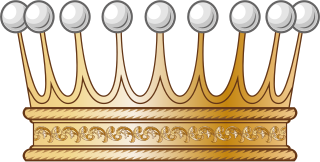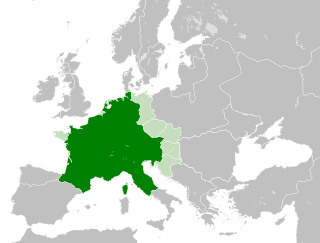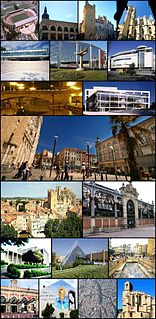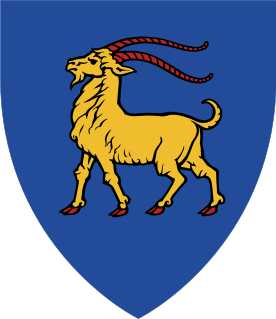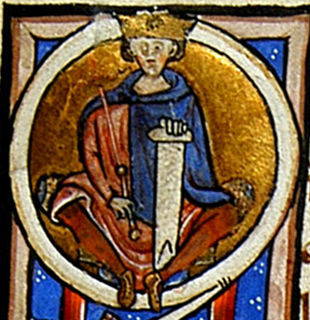
Alfonso Jordan (1103–1148) was the Count of Tripoli (1105–09), Count of Rouergue (1109–48) and Count of Toulouse, Margrave of Provence and Duke of Narbonne.
The 790s decade ran from January 1, 790, to December 31, 799.

Year 778 (DCCLXXVIII) was a common year starting on Thursday of the Julian calendar. The denomination 778 for this year has been used since the early medieval period, when the Anno Domini calendar era became the prevalent method in Europe for naming years.

Year 737 (DCCXXXVII) was a common year starting on Tuesday of the Julian calendar. The denomination 737 for this year has been used since the early medieval period, when the Anno Domini calendar era became the prevalent method in Europe for naming.

Year 610 (DCX) was a common year starting on Thursday of the Julian calendar. The denomination 610 for this year has been used since the early medieval period, when the Anno Domini calendar era became the prevalent method in Europe for naming years.

The House of Zähringen was a dynasty of Swabian nobility. Their name is derived from Zähringen castle near Freiburg im Breisgau.
Count palatine is a high noble title, used to render several comital styles, in some cases also shortened to Palatine, which can have other meanings as well.

The House of Welf is a European dynasty that has included many German and British monarchs from the 11th to 20th century and Emperor Ivan VI of Russia in the 18th century.

George was a King of Saxony of the House of Wettin.

Heinrich, count von Brühl, was a Polish-Saxon statesman at the court of Saxony and the Polish–Lithuanian Commonwealth and a member of the powerful German von Brühl family. The incumbency of this ambitious politician coincided with the decline of both states. Brühl was a skillful diplomat and cunning strategist, who managed to attain control over of Saxony and Poland, partly by controlling its king, Augustus III, who ultimately could only be accessed through Brühl himself.

DomFerdinand II was a German prince of the House of Saxe-Coburg and Gotha-Koháry, and King of Portugal jure uxoris as the husband of Queen Maria II, from the birth of their son in 1837 to her death in 1853.

Louis Marie Jacques Amalric, comte de Narbonne-Lara was a French nobleman, soldier and diplomat.

William of Gellone, the medieval William of Orange, was the second Duke of Toulouse from 790 until 811. In 804, he founded the abbey of Gellone. He was canonized a saint in 1066 by Pope Alexander II.

Prince Albert Casimir of Saxony, Duke of Teschen was a German prince from the House of Wettin who married into the Habsburg imperial family. He was noted as an art collector and founded the Albertina in Vienna, one of the largest and finest collections of old master prints and drawings in the world.
Ermengarde, was a viscountess of Narbonne from 1134 to 1192. She was the daughter of Aimery II of Narbonne and his first wife, also named Ermengarde.
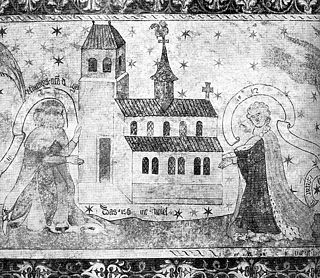
Burchard III, a member of the Hunfriding dynasty, was the count of Thurgau and Zürichgau, perhaps of Rhaetia, and then Duke of Swabia from 954 to his death.
Burchard I, a member of the Hunfriding dynasty, was a Duke of Alamannia from 909 until his death. He also held the title of a margrave of Raetia Curiensis, as well as count in the Thurgau and Baar.
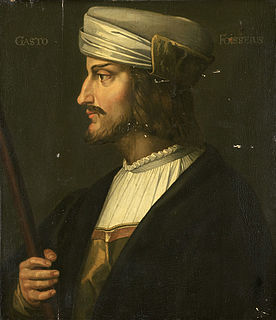
Gaston IV was the sovereign Viscount of Béarn and the Count of Foix and Bigorre in France from 1436 to 1472. He also held the viscounties of Marsan, Castelbon, Nébouzan, Villemeur and Lautrec and was, by virtue of the county of Foix, co-prince of Andorra. From 1447 he was also Viscount of Narbonne. Through his marriage to Eleonor, heiress of the Kingdom of Navarre, he also held the title of Prince of Navarre.

Rodulf was the archbishop of Bourges from 840 until his death. He is remembered as a skillful diplomat and a proponent of ecclesiastical reform. As a saint, his feast has been celebrated on 21 June.
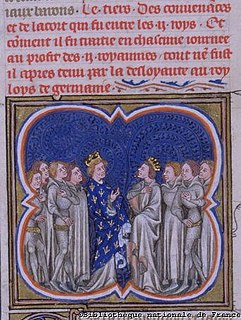
Louis the Younger, sometimes Louis III, was the second eldest of the three sons of Louis II the German and Emma. He succeeded his father as the King of Saxony on 28 August 876 and his elder brother Carloman as King of Bavaria from 880 to 882. He died in 882 and was succeeded in all his territories, which encompassed most of East Francia, by his younger brother, Charles the Fat, already King of Italy and Emperor.
